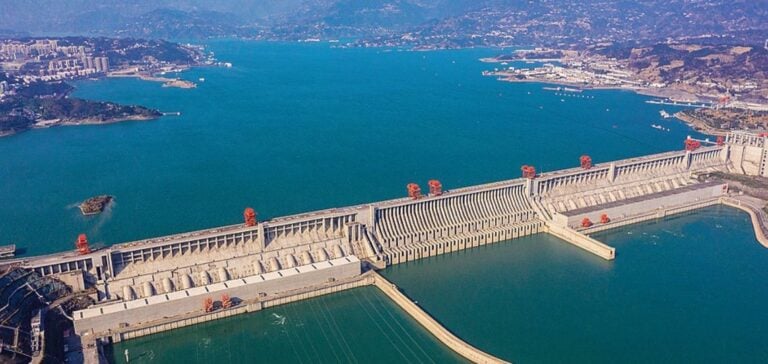China enjoyed an exceptional May in terms of hydropower production, reaching 115 billion kilowatt-hours (kWh), a significant increase on the previous year’s 82 billion kWh. This upturn is attributed to the particularly abundant spring rains, which enabled optimum use to be made of the cascading dams along the Yangtze River. The main power plants at Wudongde, Baihetan, Xiluodu, Xiangjiaba, Three Gorges and Gezhouba saw their output increase substantially.
This increase in hydroelectric production reduces China’s dependence on thermal power plants, mainly coal-fired, which had seen a rise in production by 2023. In May 2024, thermal generation was down 17 billion kWh on the previous year, while hydroelectric, wind and solar generation saw a combined increase of 48 billion kWh. By 2030, China’s hydroelectric storage capacity should reach 120GW.
Impact of weather conditions
The return of above-average spring rains was crucial to this increase. The monsoon season in July and August could further boost production if rainfall remains high. In 2024, installed hydroelectric capacity reached 423 million kW, an increase of 14% on 2020. This increased capacity, combined with favorable weather conditions, points to the possibility of record production levels this summer.
China also recorded record levels of wind and solar generation in May 2024. Wind generation reached 77 billion kWh, compared with 74 billion kWh in May 2023. Solar production jumped to 36 billion kWh, compared with 24 billion kWh the previous year. These increases have helped to offset the decline in thermal generation, supporting the government’s objective of reducing carbon dioxide emissions.
Future prospects
However, despite this impressive growth, most of the potential sites for hydroelectric dams have already been developed. The future of China’s emissions reduction and energy growth will rely more on the development of wind, solar and nuclear power, as well as policies to improve energy efficiency and moderate demand growth.
The Chinese government remains committed to a diversified energy strategy, seeking to balance rapid growth in electricity consumption with an increase in renewable generation capacity. China’s ambitious targets include a peak in emissions before 2030, supported by continued investment in green technologies and prudent management of existing hydroelectric resources.
The recent rise in hydroelectric production in China, boosted by favorable weather conditions, represents a significant step towards reducing dependence on coal. However, the continuation of this trend will depend on the country’s ability to further develop its renewable resources and effectively manage its growing energy demand.






















